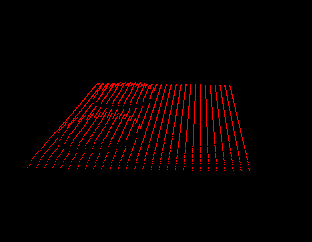
3d laser scanner for 3d printer
image

Michael
I would to become a web designer (graphic and coding) and what are the best universities/colleges for this in USA? with a BFA degree...
MAX!!?
Answer
In the USA, I recommend the following:
Pratt Institute, New York, NY;
Cranbrook Academy of Art, Bloomfield Hills, MI;
Art Center College of Design, Pasadena, CA;
California College of the Arts, San Francisco, CA;
University of California Los Angeles (UCLA), Los Angeles, CA;
Rhode Island School of Design, Providence, RI;
Otis College of Art and Design, Pasadena, CA;
Carnegie Mellon University, Pittsburgh, PA; and
Virginia Commonwealth University, Richmond, VA
Although I urge that you explore all of the above, I am more familiar with the following; and, thus, I have provided a bit of information.
*Art Center College of Design
1700 Lida Street
Pasadena, CA 91103
(626) 396-2373
The college offers programs leading to the BFA and BS Degrees, as well as graduate degrees. Its GRAPHIC DESIGN design program is first-rate and it includes excellent academic and technical offerings. For the increasingly computer-literate students who enter the Art Center, the idea of leadership is key. As the college notes, "these young designers will have opportunities to shape the development of a medium that is only beginning to fulfill its promise."
Please see:
http://www.artcenter.edu/accd/programs/u...
*Otis College of Art and Design
9045 Lincoln Boulevard
Los Angeles, CA 90045
(310) 665-6820
Otis College of Art and Design has a four year Bachelor of Fine Arts program that offers majors in seven areas: Communication Arts, DIGITAL MEDIA, Architecture/Landscape/Interiors, Fashion Design, Fine Arts, Interactive Product Design and Toy Design. The cornerstone of the Otis program is the first year curriculum, which is called Foundation. Students from all majors take the core studio classes: drawing and composition, figure drawing, two and three dimensional design. In these integrated classes students build the art, design and creative skills and vocabulary that are the "foundation" of their subsequent studies and future work. Students enter their sophomore year well prepared to begin work in their major.
It has an excellent DIGITAL MEDIA program the primary goal of which is to strike a balance between traditional art and technology, and between individual vision and teamwork. By providing a fundamental understanding of digital tools and their creative applications, the department prepares graduates to meet the demands of a diverse and expanding job market. Leading designers for visual effects, Web, film, television, broadcast media, advertising, and video gaming guide the students.
Please see:
http://www.otis.edu/academics/index.html
http://www.otis.edu/academics/digital_me...
*University of California Los Angeles (UCLA)
405 Hilgard Avenue
Los Angeles, CA 90095
(310) 825-3101
The UCLA School of the Arts and Architecture has a world-class
Department of DESIGN AND MEDIA ARTS. The School and Department take pride in educating responsible designers and artists for the information age by teaching the fundamentals of Design, Media, and the Arts, and encouraging experimentation and innovation. The Department provides an extensive education in Design and Media Arts practice, history and criticism; and it fosters a critical and creative exploration of emerging forms of visual communication, typography, interaction and interface design, ubiquitous computing, virtual environments, information spaces, networked agents and other pertinent areas of research.
Housed in the remarkable Broad Art Center, its facilities include the DMA Labs. These facilities feature high-end Windows and Macintosh computers; various peripherals, such as scanners, laser printers, and large-format Epson plotters; CD and DVD burners; and film recorders and digital video cameras. The Labs also provide access to a large library of graphics software in the areas of digital photography, illustration, interactive media, and 3D-modeling and animation. In addition to the main labs, the facilities include studio space for graduates and undergraduates, several faculty research labs, a blue screen room, a video facility supporting analog and nonlinear digital editing, audio mixing, and video capture, and two digital audio facilities. Wireless access is available to laptop users, and all the computers in the facilities are connected to the campus network, giving students individual access to DMA network resources and the Internet.
Please see:
http://www.design.ucla.edu/
http://dma.ucla.edu/education/undergradc...
Does everything work?

Jello
Everything work?
GIGABYTE 3D AURORA GZ-FSCA1-ANS Silver Aluminum ATX Full Tower Computer Case
LITE-ON Black 16X DVD-ROM 52X CD-R 32X CD-RW 52X CD-ROM 2MB Cache
Western Digital Caviar SE WD
3200AAJS 320GB 7200 RPM 8MB Cache SATA 3.0Gb/s Hard Drive
Acer AL1916WAbd Black 19" 5ms Widescreen LCD Monitor 300 cd/m2 700:1
XFX PVT88PYDF4 GeForce 8800 GT 512MB 256-bit GDDR3 PCI Express 2.0 x16 HDCP Ready SLI Supported Video Card (2)
OCZ Platinum 4GB (2 x 2GB) 240-Pin DDR2 SDRAM DDR2 1066 (PC2 8500) Dual Channel Kit
XFX MB-N780-ISH9 LGA 775 NVIDIA nForce 780i SLI Intel Motherboard
Intel Core 2 Quad Q6600 Kentsfield 2.4GHz 2 x 4MB L2 Cache LGA 775 Quad-Core Processor
Microsoft Windows Vista Home Premium SP1 64-bit English for System Builders 1pk DSP OEI DVD - OEM
Xigatek Rifle cooler 92 cm
And a nice power supply...fine on that
No comments on vista please
Also, EPP 1.0...Something parrallel port but what does it do some one explain!Seems to be a plugin,,,
thanks baron9969 but I just wanted to know because my RAM is 1067 or something and my mobo says that if I have EPP 1.0, then I can use RAM above 800...
Answer
I'm not sure what the question is, exactly. The system sounds REALLY good (and you asked that we not comment on Vista (blech) so there are 3 long paragraphs of my bitching you won't see)... Though I'm not a fan of the Western Digital drives anymore. The new Seagate Parallel recording drives are much better. (Look for a ".10" after the model number)
If you are asking about the EPP 1.0 Parallel Port or Parallel Port connector... That, for those of you born after 1994 is how us old timers used to hook up our printers. A Fat (and I do mean FAT) cable plugs into that port into another huge connector on the printer.
The port (in later models - after 1984 I believe) was actually Bi-directional to varying degrees. It got info from the printer (did it finish a line, acknowledge a character, low on toner (for lasers printers), out of paper, a fly fell on the paper turning the "T" to a "B" thus Tuttel to Buttel (Brazil fans will get this), etc.)
It's also good for OLD scanners (TWAIN Devices)
I use it now with an old computer and interface box to control my heating/cooling system and related devices. (It's not as BI as I would like (Tila Tequila))
Unless your going to build a robot, control your heater or hook up an old printer or old scanner, ignore it. If you know how to get into your BIOS, you can disable it completely and give VV-v-V-V-Vista (shiny) an extra IRQ to keep the screen looking oh so nifty... Sorry, couldn't be helped. :-)
That extra IRQ to the Operating System can't hurt, and might help.
I hope that helped some, and that was the question.
Powered by Yahoo! Answers




























